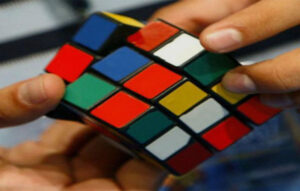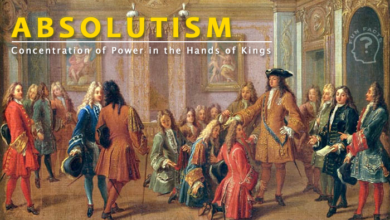The Rubik’s Cube, also known as the Magic Cube, is a three-dimensional mechanical puzzle created by Hungarian sculptor Ernő Rubik in 1974. Since then, the Rubik’s Cube has become one of the most popular and challenging toys in the world, with millions of units sold worldwide. In this article, we will explore the history of the Rubik’s Cube, its curiosities, and some techniques for solving it.
History of the Rubik’s Cube
In 1974, Ernő Rubik created the Rubik’s Cube while he was a professor of architecture at the University of Budapest. He wanted to assist his students in understanding concepts of geometry and three-dimensional space. Rubik took a month to create the first version of the Rubik’s Cube, which had six different colors on each face. After mixing up the cube’s colors, he spent several days trying to solve it.
By 1975, the Rubik’s Cube was presented at the Nuremberg Toy Fair in Germany and quickly became a sales success in Europe and the United States. Since then, various Rubik’s Cube championships have been created, and world records have been broken frequently.
Curiosities about the Rubik’s Cube
- The Rubik’s Cube has 43 quintillion, 252 quadrillion, 3 trillion, 274 billion, 489 million, and 856 thousand possible combinations.
- There are 12 edges, 8 vertices, and 6 faces on the Rubik’s Cube.
- In 2020, cubist Yusheng Du set the world record for solving the Rubik’s Cube, which is 3.47 seconds. There are several variations of the Rubik’s Cube, such as the Pyraminx, Megaminx, and Skewb.
- In 1982, the first official Rubik’s Cube competition was held in Budapest, Hungary.
Techniques for Solving the Rubik’s Cube

Since its creation in the 1970s, the Rubik’s Cube has been a three-dimensional puzzle that challenges the imagination and skill of people of all ages. At first glance, solving the cube may seem impossible, but with practice and dedication, it is possible to solve it in just a few minutes.
Now we will address some of the most popular techniques for solving the Rubik’s Cube, such as the Fridrich Method, Roux Method, and ZZ Method, as well as some valuable tips for beginners.
Fridrich Method
The Fridrich Method, also known as CFOP, is a popular technique for solving the Rubik’s Cube. It follows the approach of solving the first layer, followed by the second and third layers of the cube. The goal is to align all the faces of the cube with the same color.
To begin the Fridrich Method, the cuber must create the Cross, which involves forming a cross with the corresponding colors on the first layer. In the next step, F2L (First Two Layers), the goal is to solve the four pieces of each face of the second layer. In the third step, OLL (Orientation of the Last Layer), the cuber orients the pieces of the last layer of the cube. And finally, the fourth step, PLL (Permutation of the Last Layer), is where the cuber permutes the pieces of the last layer.
With the Fridrich Method, the cuber needs to memorize many algorithms, which are specific sequences of movements. These algorithms can be complex, but with the necessary practice and dedication, the Fridrich Method can help the cuber solve the Rubik’s Cube in just a few minutes.
It is important to remember that the Fridrich Method requires a lot of practice and skill to be mastered. It can be a challenge for beginners, but perseverance can help achieve surprising results.
Roux Method
The Roux Method is a technique for solving the Rubik’s Cube that differs from the Fridrich Method. It involves simultaneously solving the first and second layers of the cube before dedicating oneself to the third layer. The Roux Method is known to be faster and more efficient than the Fridrich Method, but it requires more practice and skill to master.
The first step of the Roux Method is the creation of the 1x2x3 block on the first layer, using the pieces that form the block. The second step is the orientation of the bottom face, where the cuber orients the pieces of the bottom face of the cube. But, the third step is the creation of the 2x2x1 block on the second layer, using the pieces that form the block. The fourth and final step is the permutation of the last layer, where the cuber permutes the pieces of the last layer.
ZZ Method
The ZZ Method is a more recent technique and was developed as an alternative to the Fridrich Method and the Roux Method. It focuses first on solving the last layer of the cube before proceeding to the simultaneous resolution of the first and second layers. Although it is one of the most advanced and challenging methods to master, the ZZ Method can be extremely fast when performed correctly.
The first step of the ZZ Method is EOLine (Edges-Oriented Line), where the cuber orients the four pairs of edges of the last layer in a line. The second step is EO (Edges-Oriented), where the cuber orients all the edges of the last layer. The third step is F2L (First Two Layers), where the cuber solves the first and second layers simultaneously. And finally, the fourth step is OLL (Orientation of Last Layer) and PLL (Permutation of Last Layer), where the cuber orients and permutes the pieces of the last layer.



